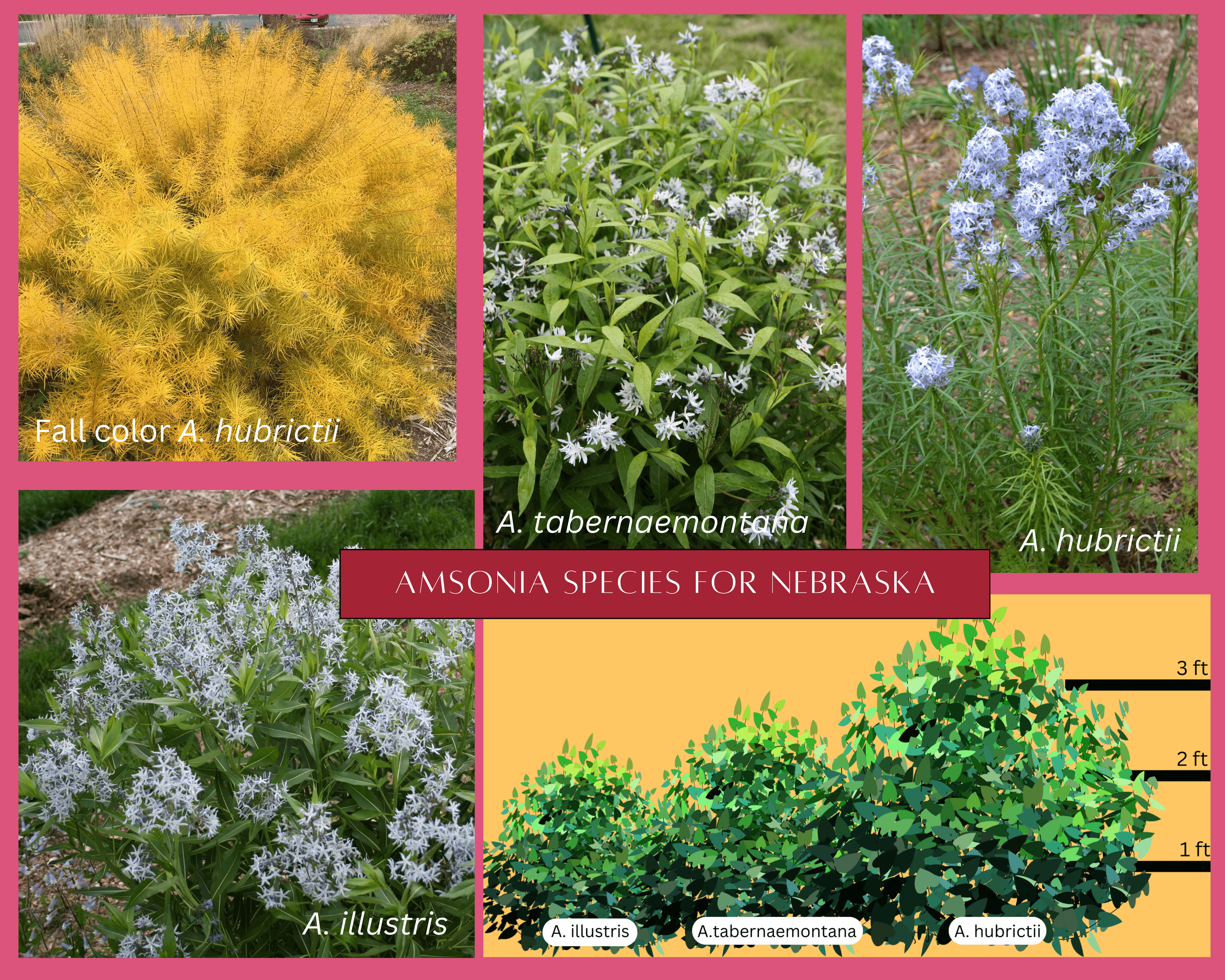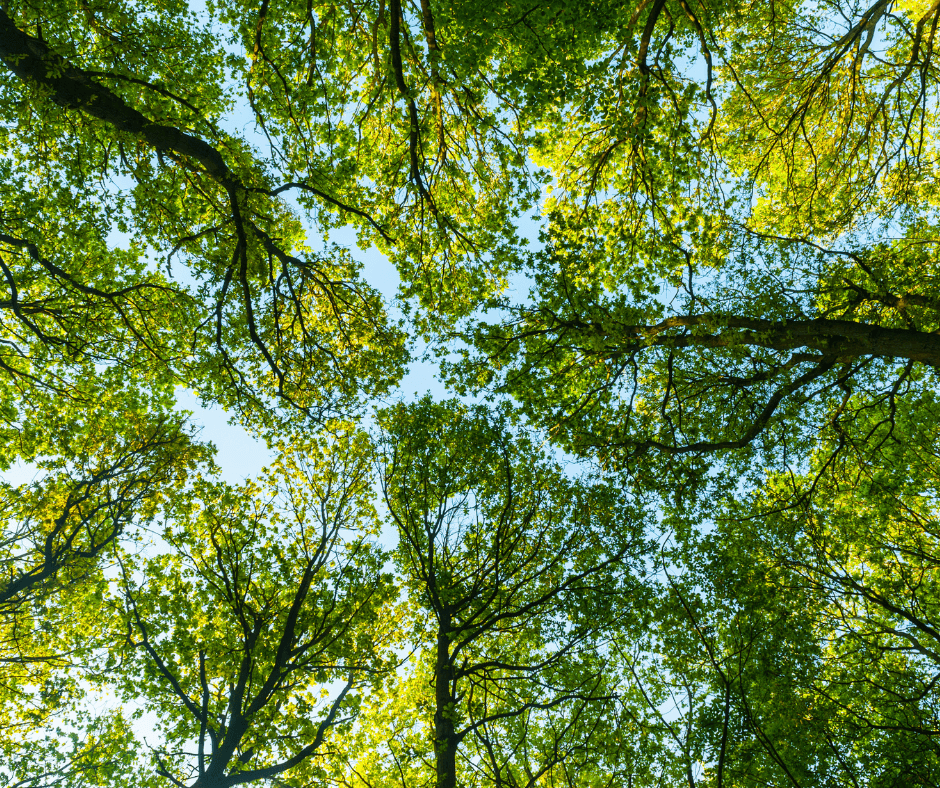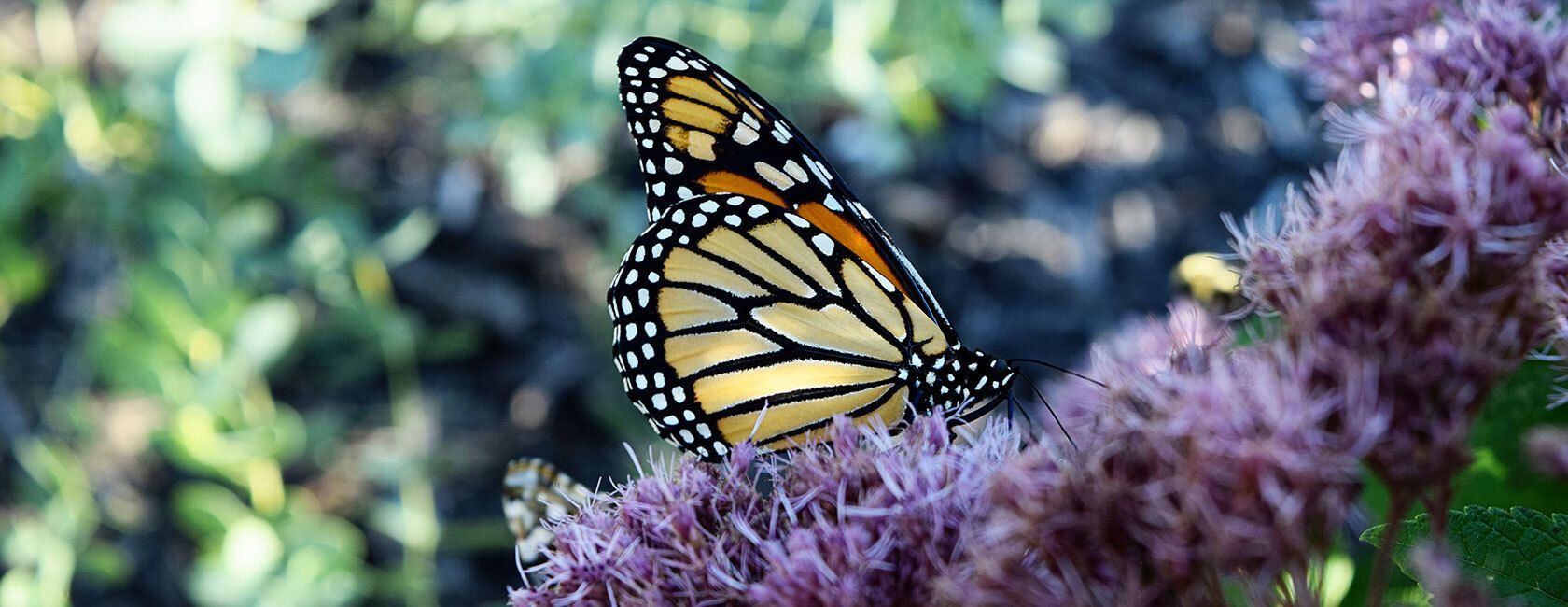
Deciduous trees and shrubs tend to be our go-to sources for fall color, but perennials can be another way to add a splash of vibrancy to late-season gardens or yards. Consider bluestar (Amsonia), for example, which offers an unexpected burst of warm, golden yellow at this time of year.
We love Amsonia for its fall color, as well as for its reliability in urban and public sites. Because its stems are not woody and die back to the ground during the winter, Amsonia's upright, bushy character provides structure to the garden while allowing the landscape to be cleared completely each spring without needing to work around a more permanent shrub.
The three species we typically grow are very similar in many ways but range in size and growing conditions, from full sun to part shade, eastern to western Nebraska, and rain gardens to dry sites. There are many species of Amsonia and quite a few reliable cultivars, but the three we prefer to work with are eastern bluestar (Amsonia tabernaemontana), shining bluestar (Amsonia illustris) and threadleaf bluestar (Amsonia hubrictii). Because they are so similar in appearance, it can be hard to tell them apart and to decide which one is right for your garden. We'll break down the characteristics and differences of each for you below.
Common characteristics of all bluestar:
- Grow in full sun to part shade.
- Grow best in sandy to loamy soil; prefer good drainage but tolerate clay soils.
- Work well in rain gardens.
- Have multiple stems from a slowly spreading crown; can be divided after several years.
- Have clusters of blue, star-like flowers from April-May.
- Have narrow, oval shaped leaves.
- Turn yellow in the fall.
- Are visited by hummingbirds, carpenter bees, hummingbird moths and many species of butterflies.
- Due to latex sap, are usually left alone by deer and rabbits.
Eastern bluestar (Amsonia tabernaemontana):
- Medium height, about 3 feet tall; occasionally 4 feet in optimal conditions.
- Wettest soil preference, medium to wet moisture conditions.
- Thrives in eastern Nebraska.
- Native to southeastern US; found in open woodlands and thickets.
Shining bluestar (Amsonia illustris):
- Typically the smallest species at 2-3 feet; in optimal conditions can be closer to 4 feet.
- Leaves are thicker and shinier.
- Offers the most prolific blooms.
- Prefers average to medium moisture conditions but tolerant of dry conditions.
- Ideal for eastern and central Nebraska but can grow in western Nebraska with adequate moisture.
- Native to Arkansas, Kansas, Missouri, Oklahoma, and Texas; it is found in sandy, gravelly and rocky soils along streams.
Threadleaf bluestar (Amsonia hubrictii):
- Largest of the Amsonias, reaching 4-5 ft, leaves are thin and needle like.
- Offers the most showy fall color.
- Driest soil preference, dry to medium moisture conditions.
- Can be planted across the state.
- Native to Arkansas and Oklahoma; found in rocky outcrops and dry creek banks.


